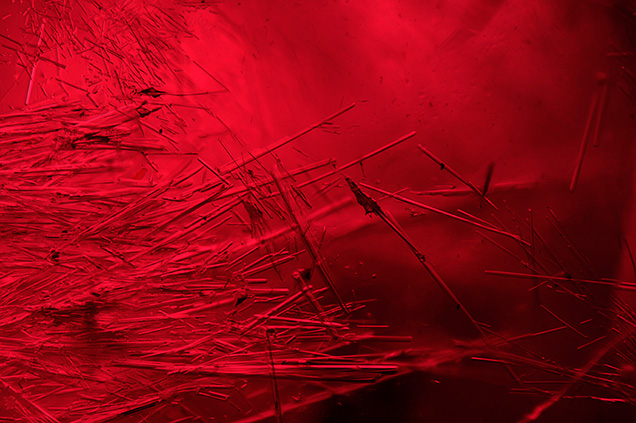Sillimanite in Ruby

Recently, the New York laboratory received for origin determination a ruby whose unusual lathe-like inclusions caught the authors’ eyes. The inclusions were long, prismatic, and transparent, often accumulating in small bundles throughout the stone (see above). Luckily, a few needles broke the surface, allowing laser Raman spectroscopy to identify the mystery inclusions as sillimanite, an aluminosilicate mineral that forms in high-grade metamorphic rocks, including the amphibolite facies. With a chemical formula of Al2SiO5, sillimanite, a polymorph of andalusite and kyanite, is frequently found with ruby.
Laser ablation–inductively coupled plasma–mass spectrometry (LA-ICP-MS) of the host ruby revealed a particularly high iron concentration of 7100–7410 ppmw. The combination of the elemental composition and inclusions indicates the stone is from an amphibolite host rock, a non-classic metamorphic formation (NCL). NCL ruby sources include East African countries such as Mozambique, Madagascar, and Tanzania, as opposed to classic metamorphic sources such as Myanmar (formerly Burma) and Vietnam.
Such a high density of these inclusions is rarely observed in stones submitted to GIA. Sillimanite itself is not a particularly uncommon mineral, especially in amphibolite host rocks, so why has it been missing from previously analyzed East African rubies at GIA? Due to its preferred habit of densely packed needles, sillimanite in ruby likely affects transparency, potentially resulting in non-gem-quality translucent to opaque rubies. Such stones are not frequently submitted to GIA. It is refreshing to see less common mineral inclusions in the lab, as they provide a greater understanding of East African rubies.



